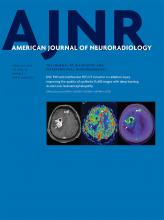We read with interest the comments by Ridley et al and have the following observations.
The term “bovine arch,” according to Vitek,1 was coined to describe the angiographic appearance seen with a common origin of the innominate artery and the left common carotid artery, in which the left common carotid artery was seen to have a proximal horizontal course in the superior mediastinum before curving superiorly to enter the neck. Before the 1970s, this anatomic variant was called by its Latin name, “truncus communis with sinistra.” The term “bovine arch” was first used in the literature only in the 1970s. There is confusion in the current literature about the derivation of the name bovine arch as to whether it refers to the anatomic pattern or its angiographic appearance.
Viewed in the anatomic context, the course of the proximal left common carotid artery when arising from the innominate artery could vary from being horizontal to more vertical in the superior mediastinum before coursing superiorly to exit the thoracic outlet. In patients having a more horizontal course of the proximal left common carotid artery, the characteristic bull horn–like appearance is seen on angiography as described by Vitek.1 This is usually seen in the elderly, in whom the tortuous course of the proximal carotid artery could be the result of vascular aging.
Etymologically, analogous names have followed, 2 of which are “avian” and “amphibian” arches. Whereas the avian arch refers to a common trunk for both carotid arteries and a common trunk for both subclavian arteries originating from the aortic arch as is seen in birds, the amphibian arch refers to a double aortic arch as seen in amphibians.2
Thirdly anatomists and cardiovascular researchers have begun to replace Greek and Latin names with more anglicized names to reflect the anatomic/pathologic abnormality in an accurate manner and to facilitate a unified reporting system and communication across the world, for instance, “common arterial trunk” in place of “truncus arteriosus.” Even though animal names have been used to facilitate understanding by medical students, they are unscientific in a purist's view and should not be used in scientific communication involving anatomic abnormalities. With the exceptional advancements in orthogonal imaging technologies, an anatomic abnormality can have a varied appearance.
Therefore, use of the term “bovine arch” for a common origin is not inclusive of all its patterns seen radiologically and does not reflect the true ‘bovine’ anatomy. Hence, it would be preferable to use a more anatomically appropriate term, brachiobicarotid trunk, for the anatomic variation.
References
- © 2019 by American Journal of Neuroradiology












